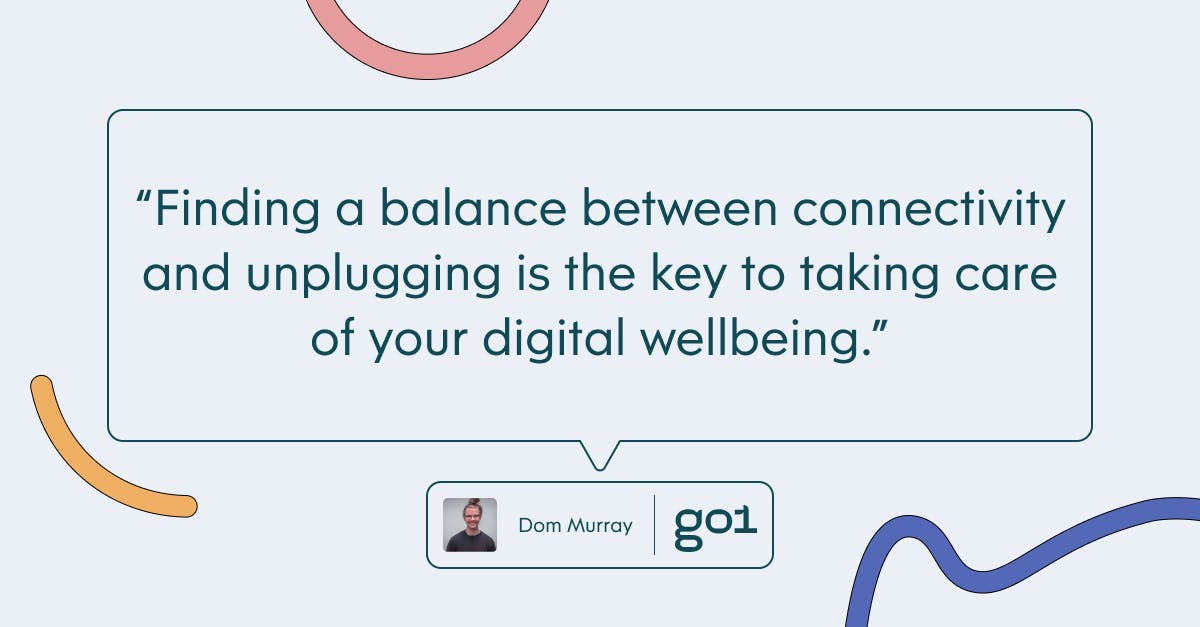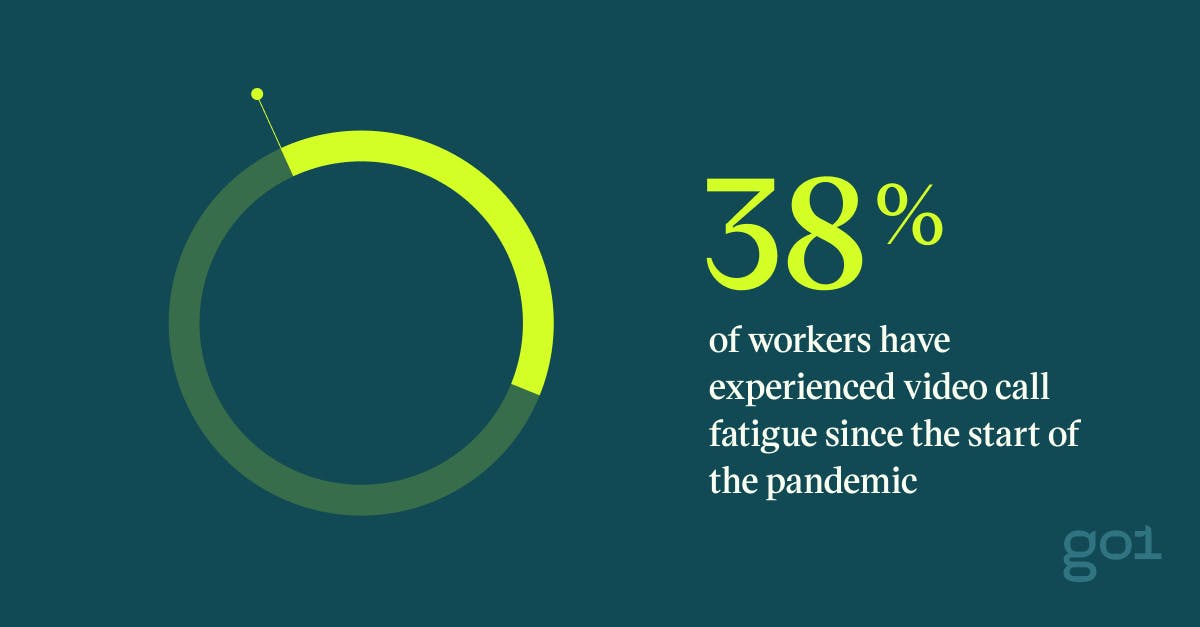
How to take care of your digital wellbeing

You take care of your physical wellbeing by eating a balanced diet, exercising regularly, and getting enough sleep. You take care of your mental wellbeing with meditations, self-care, and reaching out for support in times of need. However, given the average Australian now spends 6 hours and 13 minutes online per day — a 10% increase from 2020 — how often do you think about taking care of your digital wellbeing?
Taking care of your digital wellbeing has become increasingly important since the start of the pandemic, as many of us have spent more time working from home and grappling with the associated fatigue and isolation. You’ve probably heard the phrase bandied around in meetings and chatting with colleagues — ‘don’t forget to look after your digital wellbeing.’ But what does this actually mean?
To help get to the bottom of this, we’ve decided to take a closer look at digital wellbeing. We’ll start with 6 need-to-know facts about digital wellbeing, before asking ‘what is digital wellbeing’, and finishing with how to combat Zoom fatigue.
6 need-to-know facts about digital wellbeing
Before we get into the crux of what digital wellbeing means, it’s worth contextualising this phenomenon with 6 need-to-know facts about digital wellbeing.
- Digital wellbeing is becoming increasingly important. 84% of people say they can’t go a day without using their phone, while an estimated 210 million people experience internet and social media addictions.
- 25% of people have changed how they interact with technology to improve their digital wellbeing, such as deleting apps and altering notification settings.
- When people make changes to their technology consumption, 80% say these changes have a positive impact on their wellbeing.
- Experts are split on digital wellbeing: 47% of experts predict that individuals’ wellbeing will be more helped than harmed by digital life in the next decade, while 32% say people’s wellbeing will be more harmed than helped.
- Due to excessive internet use, 48% of us neglect housework, 47% lose sleep, and 31% miss out on spending time with family and friends.
- Digital overload decreases productivity by up to 40%, while also negatively impacting our stress and anxiety levels, analytical skills, memory, and even heart rate and blood pressure.
Now that we understand how significant digital wellbeing is — and how damaging a poor sense of digital wellbeing can be — let’s dig a little deeper and explore the ins and outs of digital wellbeing.
What is digital wellbeing?
At first glance, digital wellbeing seems relatively self-explanatory. It is simply the act of taking care of your wellbeing online. However, the nature of today’s online world adds several layers of complexity to this endeavour. For example, you may recognise that you spend too much time on a particular app to the detriment of your wellbeing, but feel like you’re unable to disconnect. Or, you might feel burned out from too many Zoom meetings, but the calendar invites just keep piling up. In today’s online age, taking care of your digital wellbeing is far easier said than done.
According to the Building Digital Capability blog, digital wellbeing means “the capacity to look after personal health, safety, relationships and work-life balance in digital settings; to use digital tools in pursuit of personal goals (e.g. health and fitness) and to participate in social and community activities; to act safely and responsibly in digital environments; to negotiate and resolve conflict; to manage digital workload, overload and distraction...an understanding of the benefits and risks of digital participation in relation to health and wellbeing outcomes.”
The Digital Wellbeing organisation builds on this, providing two succinct definitions. Firstly, they explain that digital wellbeing simply means “finding a balance with technology, that feels right for you.” Secondly, they add that digital wellbeing is “the mindful balance between digital connectivity and digital unplugging.” As such, digital wellbeing is all about balance. While most of us now spend a significant amount of time online for work, leisure, and study, you can always have too much of a good thing. Finding a balance between connectivity and unplugging is the key to taking care of your digital wellbeing.

However, as mentioned, this can be far easier said than done. How do you unplug and find the right balance when 84% of people use their phones daily, and a massive 210 million people are estimated to suffer from internet and social media addictions?
To help break these damaging habits, experts suggest taking some of the following steps to care for your digital wellbeing:
- Leave your phone or tablet in a different room while focussing, to avoid temptation and reduce distractions.
- Disable distracting or tempting notifications on your phone.
- Limit the amount of time you spend on social media each day. Research shows that people who spend more than two hours per day on social media have significantly lower self-esteem than those who spend less than two hours per day on social media.
- Try deleting the apps that you feel are damaging your wellbeing. If this feels like too big of a leap, start by setting goals to slowly reduce the amount of time you spend on these apps.
- Remove colour filters from your phone to only keep shades of grey, as brightly coloured LCD screens stimulate parts of our brain that can trigger addiction.
- If you feel overwhelmed by technology at work, try completely disconnecting from technology after work or on weekends.
- Build the habit of not checking your phone for an hour before going to bed to promote healthier sleep habits.
- If you feel like your digital wellbeing is suffering, reach out to friends and family and prioritise real-life relationships.
- Avoid overload by taking regular breaks at work.
- Protect your ‘focus time’ by setting clear boundaries with your colleagues about when you will and won’t be available. If necessary, block this time out in your calendar.
Zoom fatigue is real. Here’s how to combat it.
With the prevalence of remote working, Zoom fatigue has become one of the most common issues leading to poor digital wellbeing. Many of us are probably familiar with the feeling. The calendar invites keep piling up until it starts to feel like you live on Zoom.
According to research by staffing firm Robert Half, 38% of workers have experienced video call fatigue since the start of the pandemic. That’s not all, as respondents also say they spend 30% of their workday on video calls on average, with 24% of people adding this is an “exhausting and inefficient” use of time.

Similarly, Tech Republic finds that 27% of people are "trying to pay attention, but often zoning out" while on Zoom meetings — a clear sign of fatigue.
Other figures suggest that nearly half of remote workers (49%) experience high levels of exhaustion due to attending daily video calls. 63% add that they now attend more meetings online than they would have in the office.
Digging deeper into these numbers, women and introverts suffer the effects of Zoom fatigue most acutely. One survey found that approximately 1 in 7 women (13.8%) reported feeling "very" or "extremely" fatigued following a Zoom call, compared to just 1 in 20 men (5.5%). According to the researchers, this is because women “feel more trapped by having to stay in the camera's field of view, tend to have longer meetings than men on average, and typically take fewer breaks.” Similarly, 58% of introverts say they have experienced on-camera exhaustion, compared to 40% of extroverts.
As such, Zoom fatigue is a real and impactful phenomenon that can weigh heavily on our digital wellbeing. So, what can we do to combat Zoom fatigue? Occam’s Razor tells us that the simplest answers are often the best, and in this case, that wisdom rings true. According to research by Microsoft, the best way to combat Zoom fatigue is by taking regular breaks.
Microsoft's in-depth analysis found that taking breaks between meetings is the most effective way to reduce Zoom fatigue and increase productivity. Their study showed that taking breaks between Zoom meetings significantly reduces stress while increasing focus and engagement. In contrast, when people participate in back-to-back meetings, their stress levels spike in the transition period between meetings.
We break down this research in detail in our recent article on why our brains need breaks to maintain productivity, so to learn more about how to combat Zoom fatigue, continue reading here.
For more insights, be sure to subscribe to the Go1 newsletter to stay on top of all the latest L&D trends. Or, you can book a demo today to find out how Go1 can help with your team’s learning needs.




